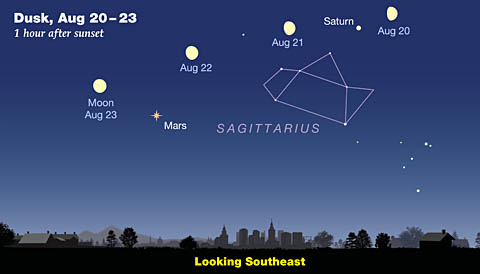As told in this month's astronomy podcast, August offers excellent viewing conditions for the always-flashy Perseid meteor shower — and a chance to see four bright planets at once.
Ask a skywatcher what’s special about August, and the response will likely be the Perseid meteor shower. These “shooting stars” are caused when little bits of grit shed by a comet called Swift-Tuttle slam into our atmosphere. Every August, we plow right through this stream of dusty debris. And this promises to be an especially good year for the Perseids. To find out why, check out August's astronomy podcast.

Sky & Telescope
This month offers you a chance to see four bright planets at once. Go outside about 30 to 45 minutes after sunset, and you’ll be able to see Venus, Jupiter, Saturn, and Mars in one grand sweep from west to east. And what about Mercury, you ask? It’s the odd planet out, hanging around the Sun in the predawn sky. If you’re up around 5 or a bit earlier late this month, look for Mercury peeking above the eastern horizon as morning twilight begins.
In between the planets and near them are a host of interesting stars. For example, did you know that the two brightest stars in the constellation Libra were considered the claws of Scorpius, or that the name of the Scorpion's brightest star translates as the rival of Mars? August's podcast tells you these stories and much more.
For example, once it gets dark you’ll see the Big Dipper hanging from its handle about halfway up in the northern sky. At the end of the handle are four stars forming its bowl. If you draw an imaginary line through the bottom pair of stars and follow it toward upper right, you'll encounter a medium-bright star. That’s the North Star, called Polaris, and it shows you the direction toward due north
There more to see in the nighttime sky. So to get all the celestial highlights in the weeks ahead — and that all-important Perseid meteor forecast — play or download this month's 9-minute-long astronomy podcast (linked below).
Podcast: Play in new window | Download
Subscribe: Apple Podcasts | Google Podcasts | Spotify | Email | RSS | More
 0
0
Comments
You must be logged in to post a comment.